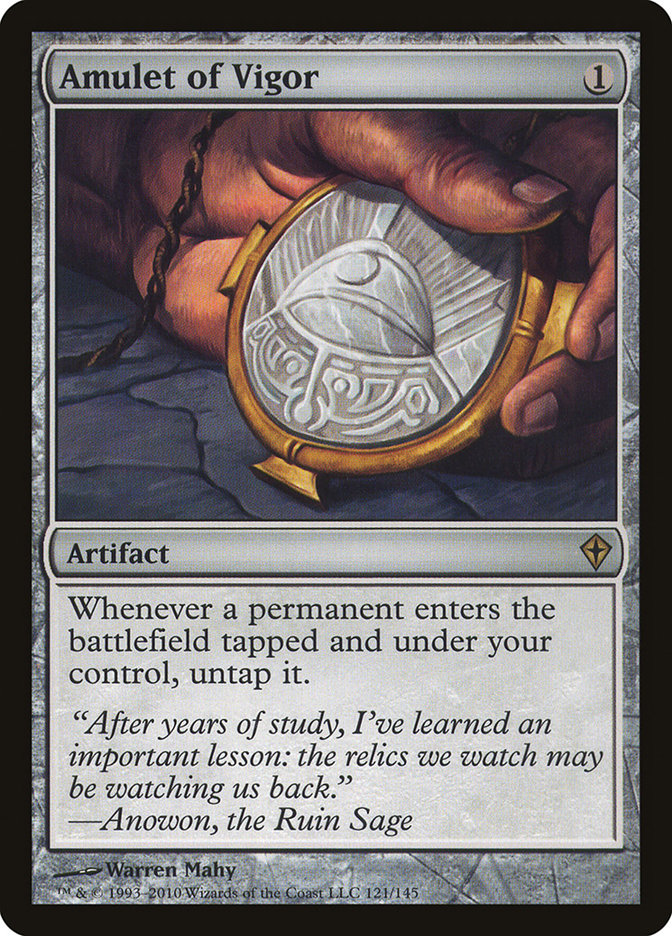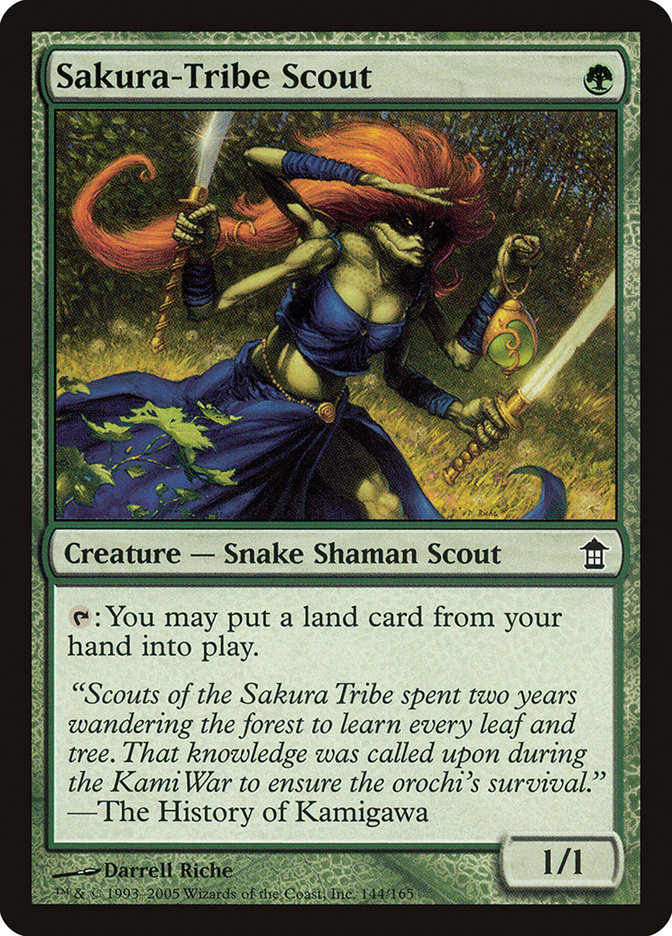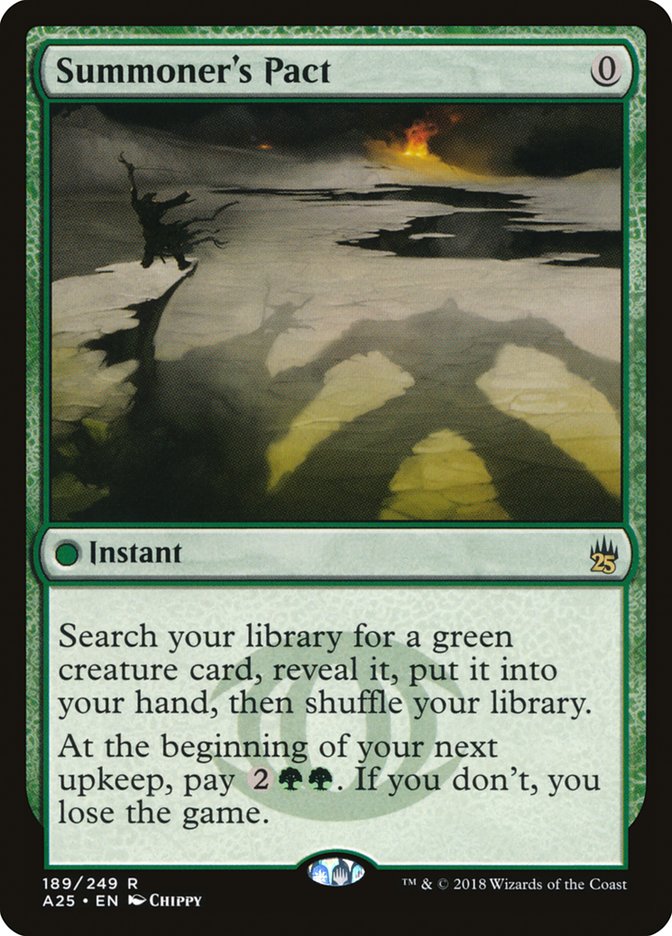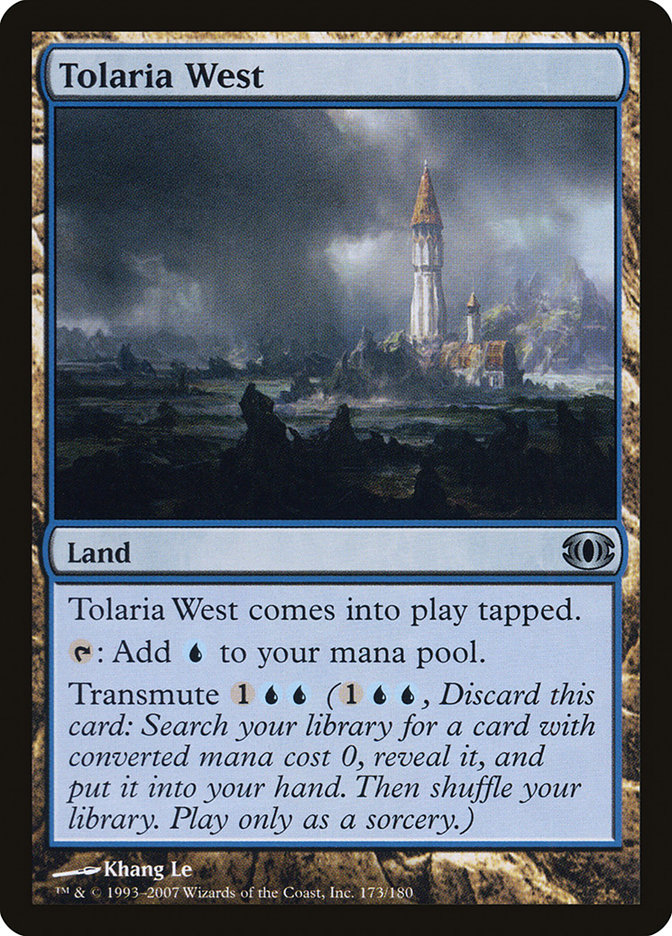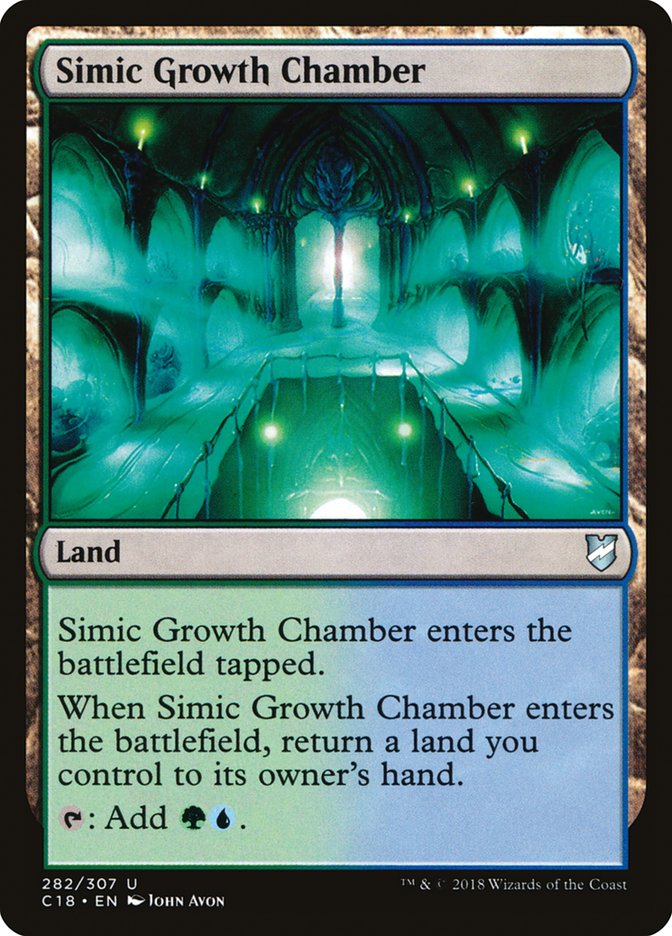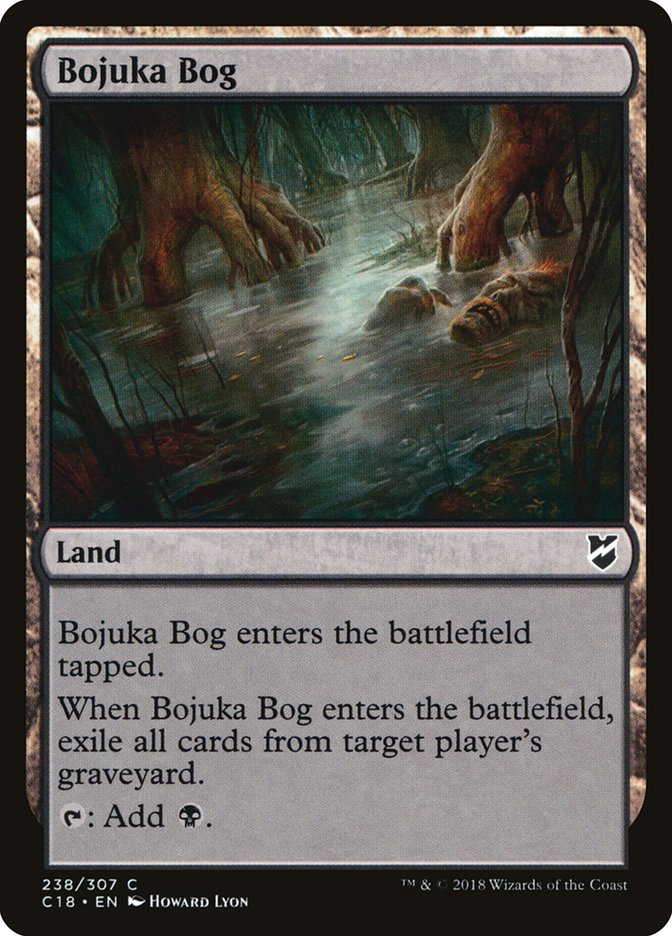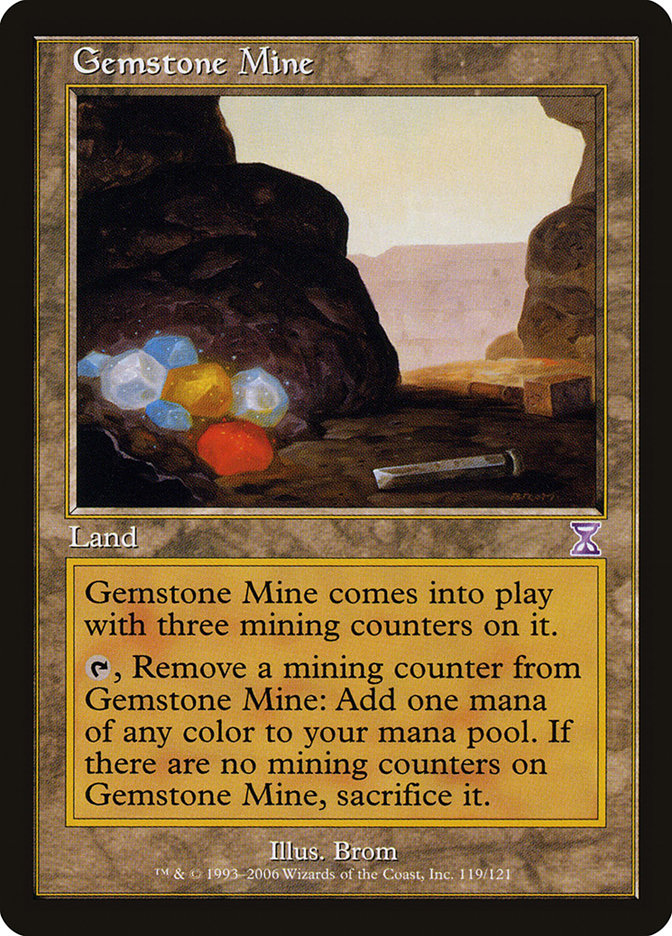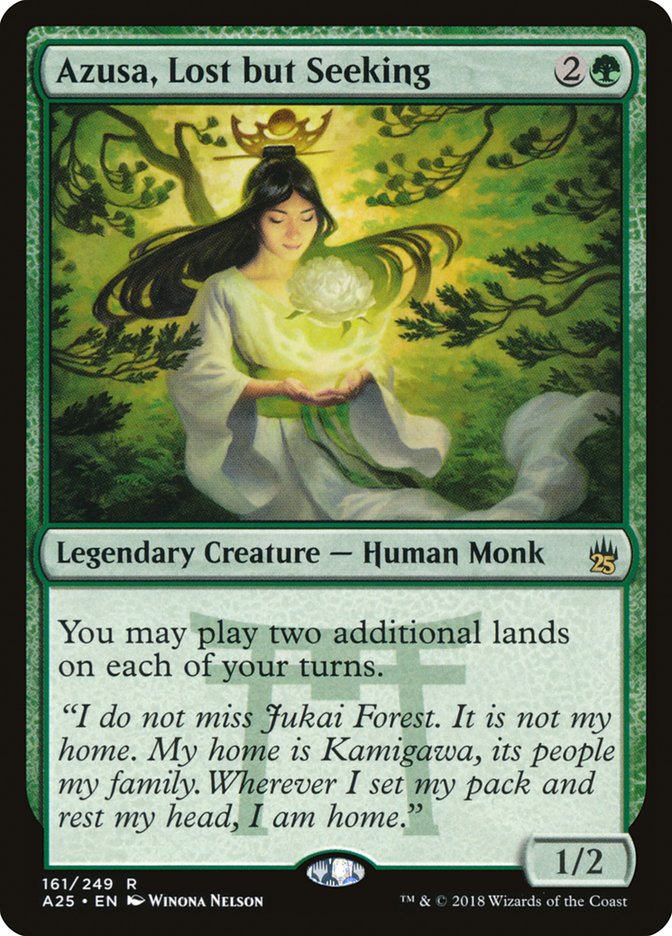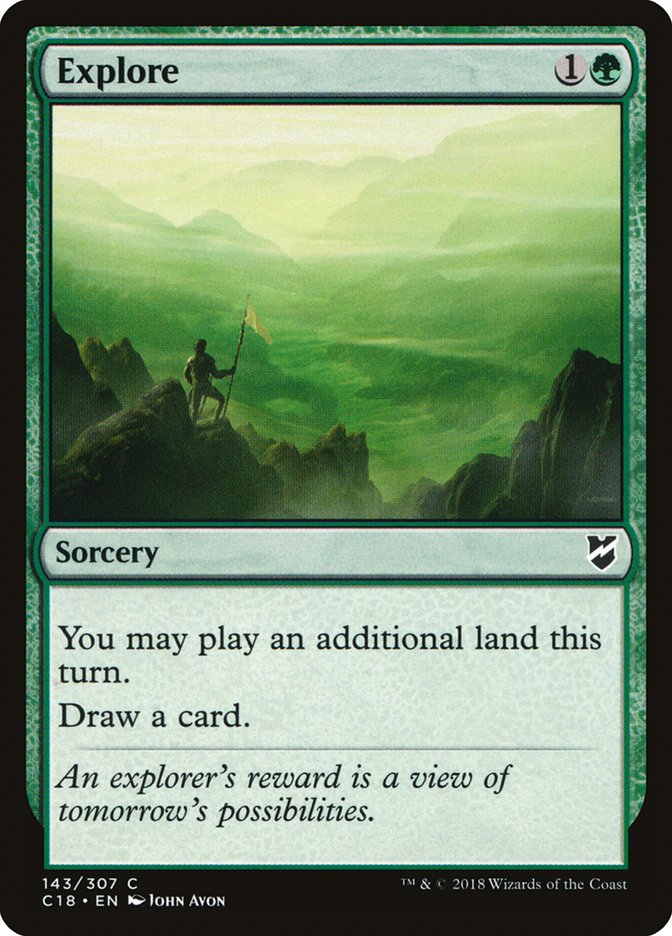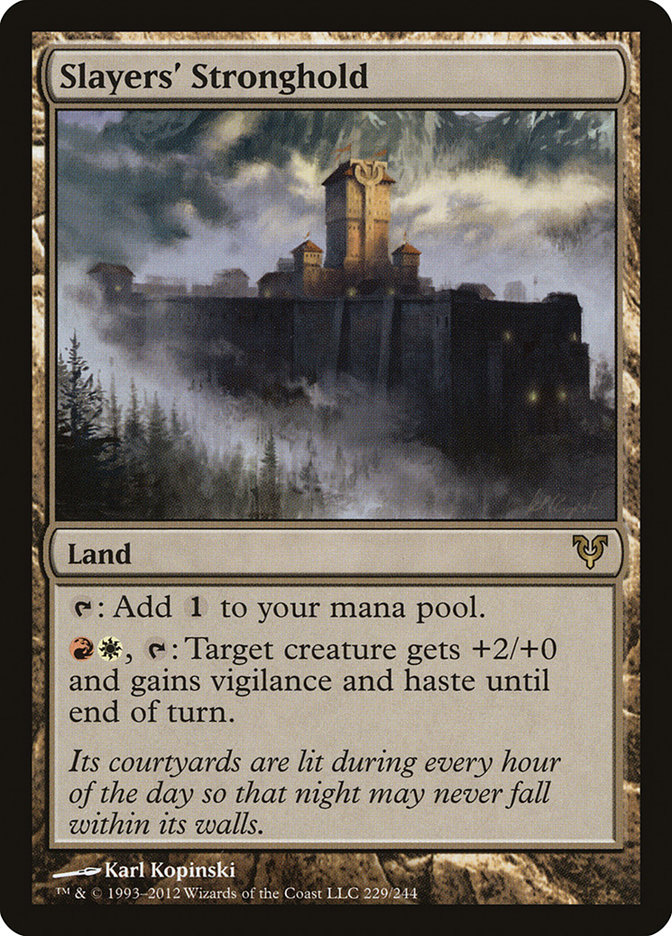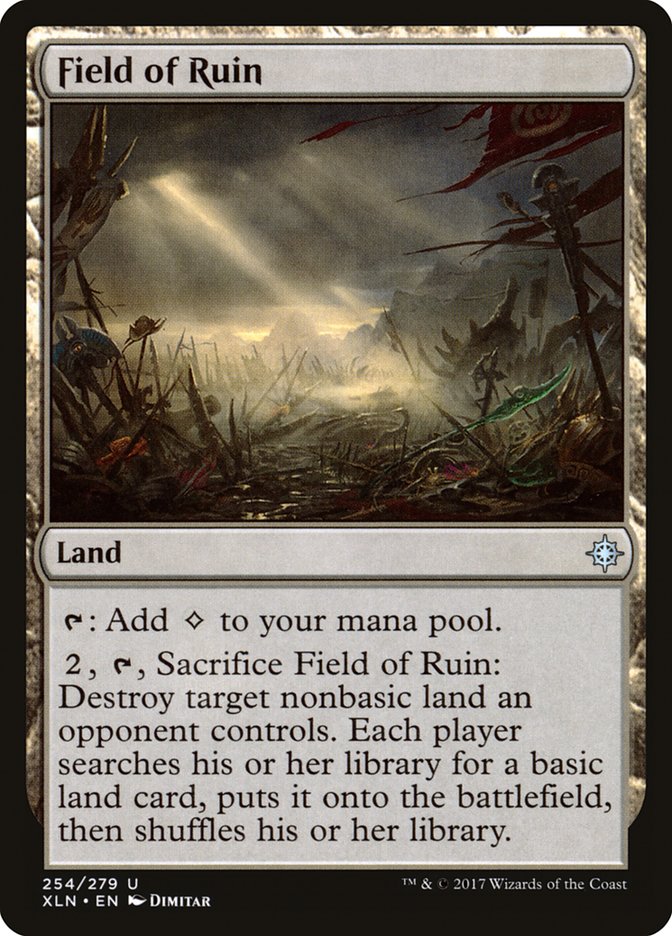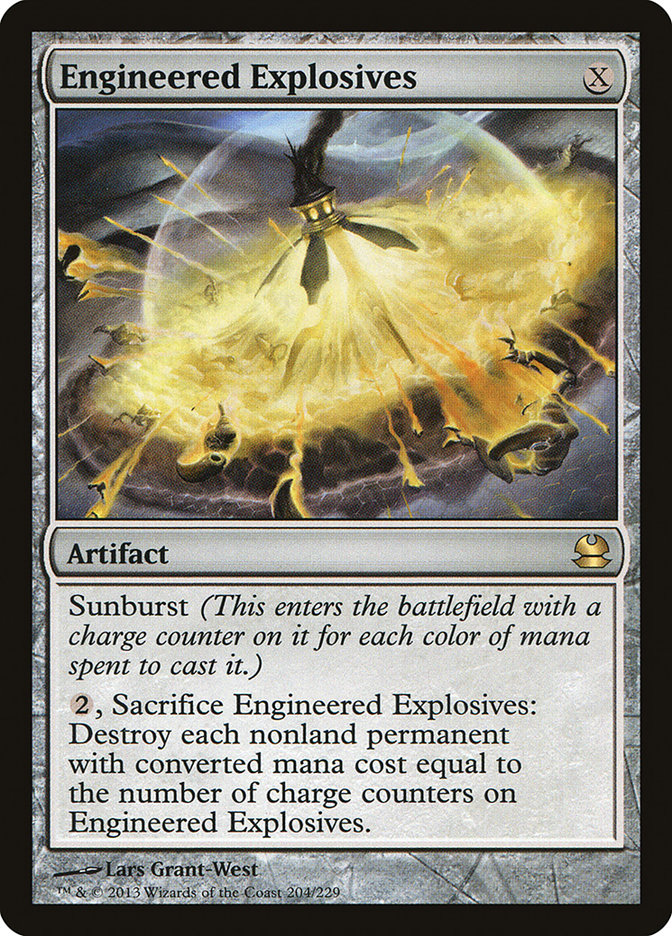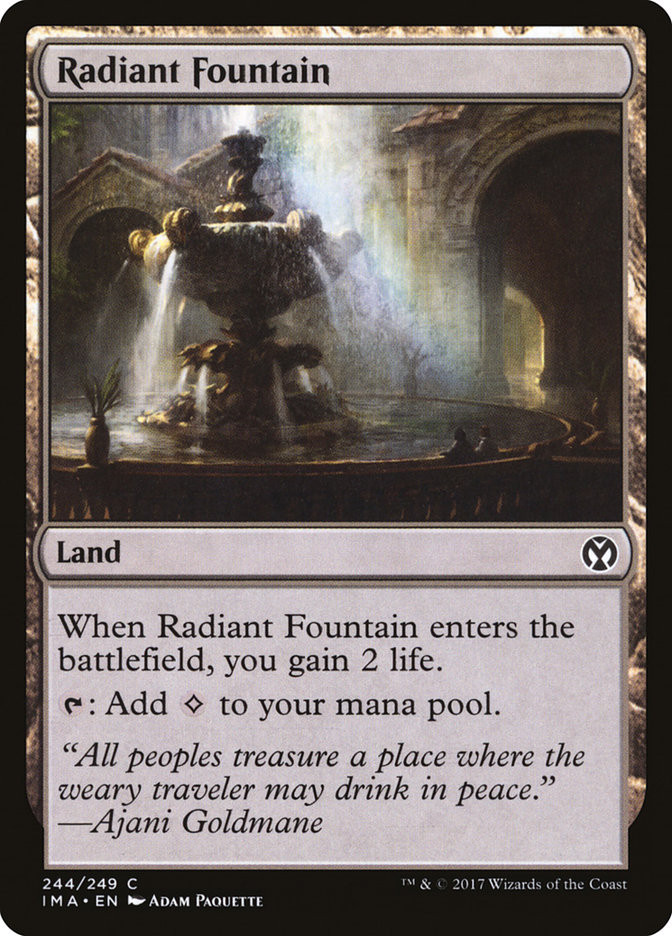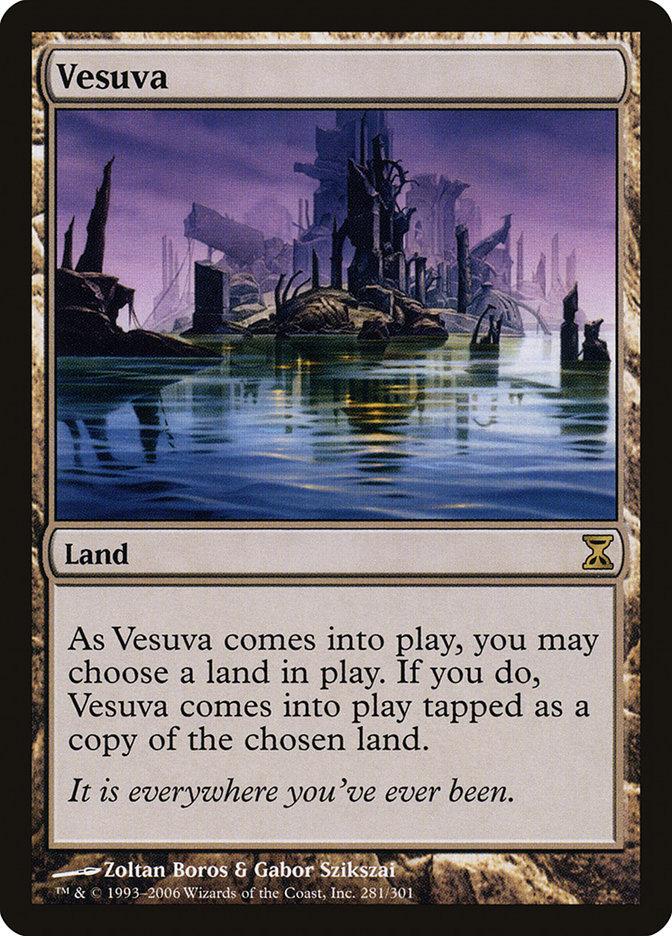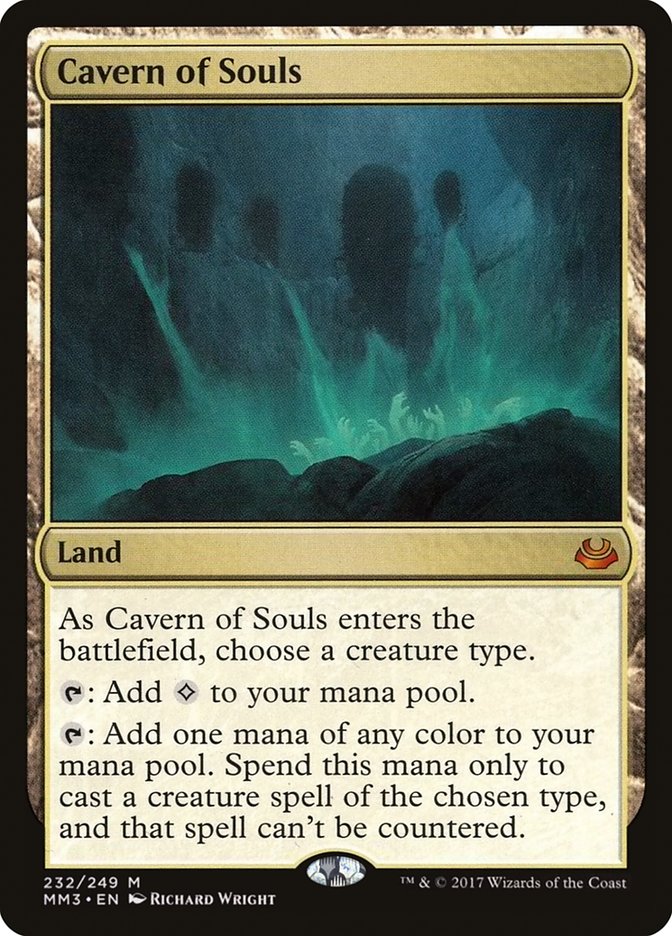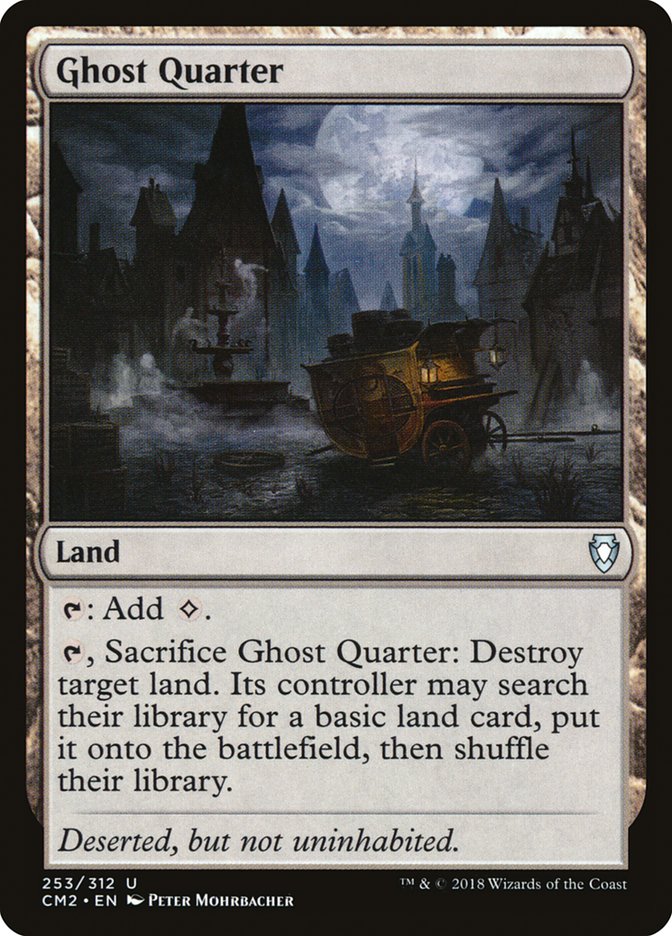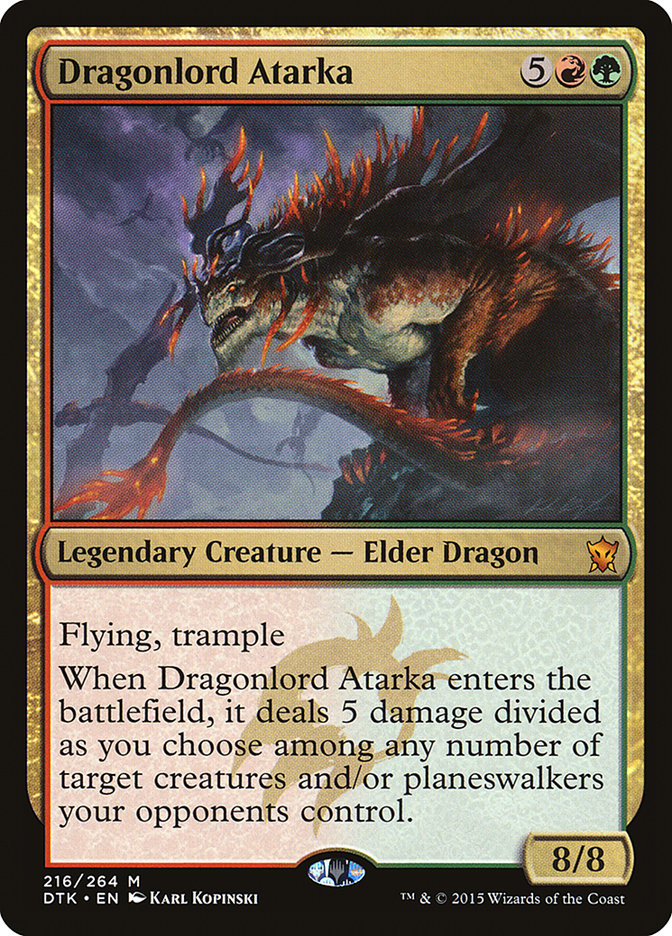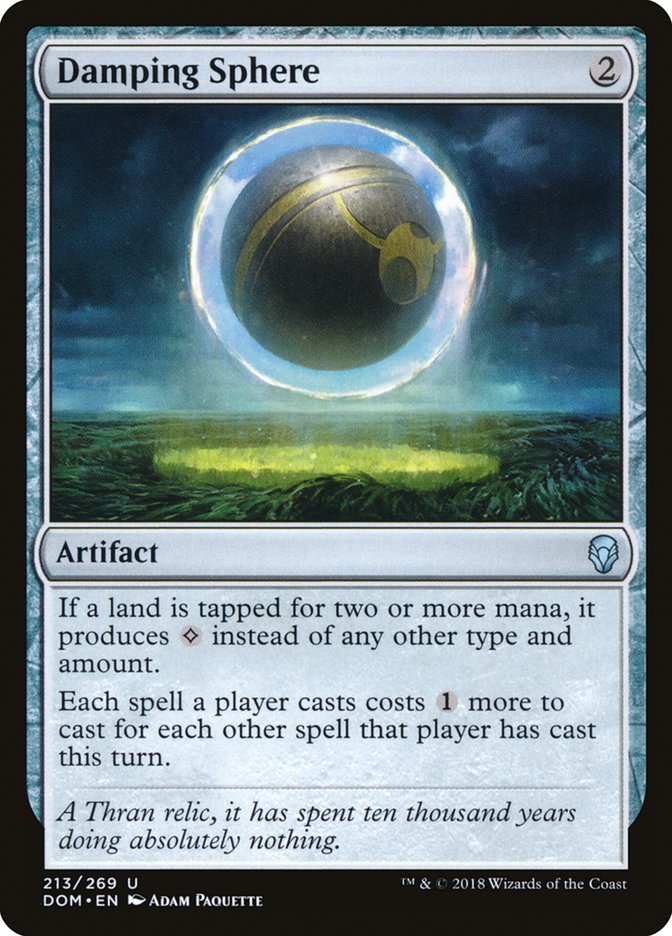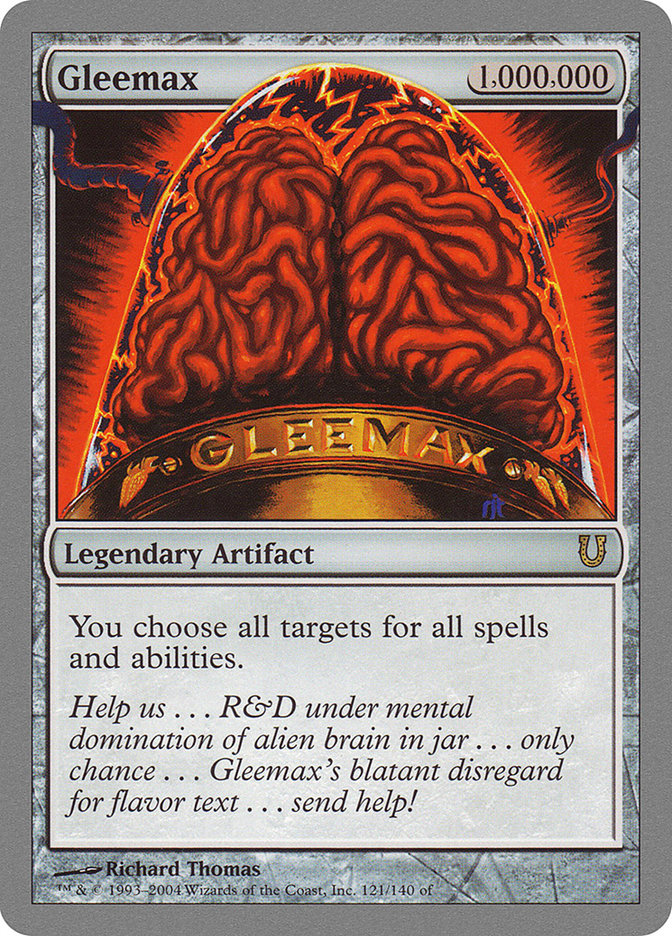Let’s just start this off by smashing through the fourth wall. Here’s
summarized conversation from a couple weeks ago of me bouncing article
topics off Cedric.
Me – “Hey, thoughts on writing about Amulet Titan?”
Cedric – “Why now? Why Amulet? Do you actually want to play that? Militia
Bugler is bad in that deck too.”
Me – “I have no answers, let alone any good ones. Just a hunch.”
Then, just as I submitted a Standard article in the format’s twilight
hours, this happened.
Creatures (15)
- 4 Azusa, Lost but Seeking
- 4 Sakura-Tribe Scout
- 4 Primeval Titan
- 1 Reclamation Sage
- 1 Walking Ballista
- 1 Zacama, Primal Calamity
Lands (28)
Spells (17)

Huh, weird.
Maybe it was Michael Mapson losing in the finals
to Matt Nass at Grand Prix Hartford a few months ago. Or Edgar Magahales
writing about the deck the week after
.
Or that it made the Top 8 of Grand Prix Sao Paolo
. The deck just stuck in my mind as something just skimming the top tables
worth a look. Or two. Or three.
Let’s continue on the Ancient Stirrings tour. I think there’s something
here worth exploring, and I want to break down some of the mystery. There’s
this perceived skill wall in the way of people playing Amulet Titan.
I want to try and break that wall down. If you cover the main steps to
casting Primeval Titan, the power of that card covers up a lot of small
mistakes from that point onward. The mulligan, sequencing, and combo
decisions with Amulet Titan are much easier once you sit down and
understand what is happening behind the scenes.
Mulligans
The basics of a keepable Amulet Titan hand are:
-
Two of the big three categories of ramp, an Amulet of Vigor, or a
big threat. -
Double ramp in a pinch so any topdeck threat is slammable very
early. - Can actually cast spells.
The first criteria is just “does my hand actually execute a gameplan?” A
turn 6 Primeval Titan is not a gameplan. The double ramp subscenario is
stating you are still casting Primeval Titan early enough to matter if you
topdeck one. The convoluted part here is how your various card selection
counts for each category.
Ancient Stirrings is partly a threat via Tolaria West, partly Amulet of
Vigor, usually just a bounceland, and never a ramp spell.
Summoner’s Pact is a threat via Primeval Titan, but can also be ramp via
Azusa, Lost but Seeking.
Tolaria West is almost exclusively a threat via Summoner’s Pact. Paying
three to transmute for Summoner’s Pact, three to cast Azusa, and then
having to pay for Pact is just too much to ask.
Once you go to six cards, you can settle for a hand with lands and a bit
less of a plan. But this is Modern. Mulligan aggressively.
The “can actually cast spells” part is one of the drawbacks of Amulet
Titan’s bounceland manabase. Occasionally you draw up hands that literally
don’t cast spells despite mixing them with lands in the appropriate ratio.
Unless that hand is one land draw away from the multiple Amulet of Vigor
perfect draw, I would mulligan.
The super corner case (for game 1s at least) involves having a very
specific hate card that makes or breaks a matchup you know you’re facing.
R/B Vengevine is not going to beat six lands and Sakura-Tribe Scout if
those lands include Bojuka Bog and Simic Growth Chamber.
If non-functional lands are an issue with the deck, just drawing the
perfect hate cards is an even stronger upside. Bojuka Bog is the most
extreme, but is Burn really beating Radiant Fountain from any
semi-functional Amulet hand? Or Infect your Walking Ballista?
Setup
So we kept a seven. What now?
You want to cast spells early, but without an Amulet of Vigor you also want
to have specific land drops untapped. In order of importance, those are six
mana almost always, one or three mana depending on specific cards, and two
mana depending on specific sets of cards.
The sixth mana untapped is obvious. Your most common win condition is
Primeval Titan, and you want to cast it as soon as humanly possible.
One untapped mana is for your cheapest ramp.
Casting Sakura-Tribe Scout first is generally better than casting Amulet of
Vigor. Scout provides incremental ramp over time; Amulet does not.
Ancient Stirrings isn’t a top priority turn 1 cast. Either of the ramp
effects usually make it easier to Ancient Stirrings later. Way more than
other Ancient Stirrings decks, Amulet Titan’s plays are scripted in
advance. You live on land drops, the other decks live on Mox Opal. While
Stirrings isn’t more important than ramp, casting it early gives you key
info on how your script is going to play out. Waiting just means it might
be too late to change your plans for a specific land you find.
Another key time to have an untapped land is three mana. That is usually
for Azusa, Lost but Seeking, sometimes to transmute Tolaria West for some
Pact.
One minor Azusa trick lies in the specifics of extra land drops and the
stack. If Azusa dies before you can play a second land, the effect goes
with it and you get stunted. Fortunately, lands don’t use the stack and you
can play them back to back….unless they trigger something.

So, if you have the following cards in hand against a Lightning Bolt deck
to start your third turn, you lead with Forest, then play Asuza, then
Tolaria West, then use your last land drop to bounceland. If they kill
Azusa, you used all your land drops and are hitting six mana the next turn.
If you had an Amulet of Vigor, it would trigger on playing Tolaria West so
you may need to resequence. This also means you can’t rely on the second
land drop with an Amulet trigger, which can get a bit tricky.
Two mana on turn 2 is the odd case to Explore, but sometimes you just need
to cast two one-drops.
If you aren’t trying to maximize your mana at a specific point, land
sequencing can often relate to getting the second use out of one land.
Khalni Garden early can get returned with a bounceland and reused, same
with Radiant Fountain or just moving Cavern of Souls from Snake to Giant.
One last thing to consider: if you have an important combo kill piece, do
you want to play it untapped as a post-Titan land or do you want it on the
battlefield to Vesuva? Stranded in your hand is the worst place. More on
this later.
You may also need to play a mini-game of hide the best non-basic against
land destruction. Cavern of Souls is absurd against U/W, so you often hold
it in hand until you use it for Primeval Titan.
All About Amulet
That’s all the buildup math for when you don’t draw your namesake card, but
there’s a couple tricks to keep in mind when you do have an Amulet of
Vigor.
The classic trick is using multiple land drops with Amulet of Vigor and
bouncelands like Dark Rituals. Each time you play a bounceland and untap it
is plus two mana. The trap you want to avoid is that you don’t always have
to return the bounceland. On the last time you play it you can leave it and
bounce something else, giving you another mana next turn to pay for a
Summoner’s Pact.
Extra land drops can add extra mana, but they aren’t all equal. Explore
with one Amulet of Vigor and a bounceland adds no mana, as the extra play
just adds the two mana the Explore costs. Azusa, Lost but Seeking adds one
though, as it costs three, but two lands drops each adding two is plus
four.
Add a second Amulet of Vigor and either of these gets wild. You can tap in
response to each Amulet of Vigor trigger and accumulate mana really fast.
Explore is plus two mana, and Azusa, Lost but Seeking is plus four on each
land for a total of five.
End Game
Now for the fun part. You have hit six mana and cast your whammy. Now what?
Oddly, this is the easy part. The thing to remember is that if you untap
and attack with Primeval Titan, you’re just going to win. Your call is then
figuring out what can go wrong to prevent that from happening and what you
can do in advance to prevent that.
I’m almost mentioning this too late, but having an extra land drop of any
kind lets you do more things. If you can float a land drop until after
Primeval Titan, it can do work, usually by recycling an enters the
battlefield trigger.
The best-known end game is Slayers’ Stronghold to attack immediately, but
unless you have two Amulet of Vigor it doesn’t really change the situation.
An attack for eight isn’t lethal; you still need to figure out how they
don’t kill you.
Let’s get the easy kill out of the way. If you have two Amulet of Vigor and
an extra three mana past Primeval Titan, they take 32 damage.
The first Primeval Titan finds Simic Growth Chamber and Tolaria West. Each
untaps twice for six total mana, then you bounce Tolaria West and transmute
to Summoner’s Pact to Primeval Titan. If you already had Tolaria West, you
can find another bounceland and just get the mana to transmute it, removing
the bonus three requirement. You then play the second Titan. That finds
Boros Garrison and Slayers’ Stronghold. Each of the two untaps gives a
different Titan haste and +2/+0. The attacks find Sunhome, Fortress of the
Legion and some lands that pay for it. With the two untaps you get to give
each 8/6 Titan double strike, and your opponent dies.
The most common thing to dodge is removal on your Primeval Titan. To beat
that, you find a Tolaria West and a bounceland to pick it up. Tolaria West
finds Summoner’s Pact, and conveniently you should jump to the exact nine
mana to transmute and cast the six-drop. This same pair can also find Pact
of Negation if you’re concerned about a combo more than weird multiple
removal lines.
If you have one Amulet of Vigor but no extra mana after casting Primeval
Titan, it is worth noting that you must immediately find this pair to
transmute for Pact of Negation, or to just save mana next turn. If you get
Slayers’ Stronghold plus Boros Garrison for the “free attack,” you find the
tutor package in combat then must bounce your Tolaria West, leaving you
with just two mana in your second main phase.
You also can find zero cost artifacts with Tolaria West. Walking Ballista
is sometimes a good enough threat that you don’t have to go through
Summoner’s Pact pains or walk into a Negate, but it’s rarely a game
changer.
Engineered Explosives is a much more important option. Sometimes the issue
is that Primeval Titan can get overwhelmed in future turns by a Slippery
Bogle or Champion of the Parish. Engineered Explosives breaks through a
potential 7/7 barrier. A common pairing is Khalni Garden to chump block and
Tolaria West, then bouncelanding the Tolaria West next turn to find
Engineered Explosives and sweep.
Khalni Garden is the way to dodge exactly Liliana of the Veil. This used to
be more of an issue. Now it is more for chump blocking a 7/7 Champion of
the Parish. Radiant Fountain is much of the same life buffer.
Vesuva comes up with Amulet of Vigor when you already have the land you
want on the battlefield. You must tap Slayers’ Stronghold to cast Primeval
Titan, so you find Vesuva and it’s all good.
Vesuva also comes up with the previously mentioned life total buffer lands
to just get more uses from them. You also need them already on the
battlefield. You can’t Vesuva the other land you find as the copy effect
checks the battlefield before it enters, at which point the other land
isn’t around yet.
Sometimes against blue decks the concept of eventually having protection
for your Primeval Titans is more important than immediately finding the
next one. You can find something like Tolaria West and Cavern of Souls and
assume you eventually find a bounceland for the Tolaria West. Or just find
bounceland to pick up Cavern of Souls and safeguard it for your next Titan.
The land where having an extra land drop is most important is Ghost
Quarter. Against Tron, you want to be able to find Ghost Quarter and Simic
Growth Chamber, bounce Ghost Quarter, then replay it and immediately blow
up an Urza’s Power Plant.
The last tutor target is the most narrow one. If you want Bojuka Bog, it
should be obvious. They have a graveyard, you need to exile it. The only
two tricks are using it to prevent Snapcaster Mage from targeting Path to
Exile, which is rare, or using it with Sakura-Tribe Scout and a bounceland
to load up an instant Tormod’s Crypt against combo, which is a bit more
common if you don’t have an Amulet of Vigor to just get Pact of Negation.
Basically all land pairings you find derive from these. There’s some corner
cases where you get a bonus from having Tolaria West access already and
find a different value land or where you need four green mana to pay for
Summoner’s Pact and a Primeval Titan next turn too, but you’re selecting
from this menu.
Sample Hands


This is a reasonable but not amazing seven to keep. You have double ramp to
hit a turn 4 Primeval Titan and Ancient Stirrings to find Tolaria West or
another whammy. If Azusa lives until turn 4, you are also plus-five land
drops and might be able to just transmute and cast Titan that turn. Keep in
mind Ancient Stirrings is only kind of a threat, so this is closer to a
borderline double ramp topdeck hand than a coherent good one.
Your first turn to want untapped mana is turn 2 for Explore, so you can
lead Bojuka Bog with the intent of Forest on turn 2. This ensures three
mana on turn 4 for Azusa, Lost but Seeking, but you can also ensure a mana
to cast Ancient Stirrings. Just return Forest with your post-Explore Simic
Growth Chamber!


You have ramp and a Tolaria West to find Summoner’s Pact with, so here’s
another keep.
I just want to resolve Sakura-Tribe Scout as soon as possible, so Gemstone
Mine on turn 1 is my plan. There’s a chance this backfires if I want to
Explore on turn 2 and Tolaria West on turn 3 but don’t find a bounceland,
but that’s fine.
The one other consideration is that you probably need to use Vesuva for
your second blue, so it must copy Gemstone Mine on turn 2 so it untaps on
turn 3 to transmute.


A nice clean keep. You want to Sakura-Tribe Scout on turn 1 again, which
gives an extra land drop a turn until turn 4 Primeval Titan. You will need
your sixth land to be untapped so make sure to bounce Gemstone Mine then
hold it.
This also a good argument for Dragonlord Atarka over Zacama, Primal
Calamity as the removal high drop. The double land drops from Sakura-Tribe
Scout naturally add to turn 4 Atarka, while Zacama is a turn 5 play.


This is a perfect hand. You’re going to Primeval Titan on turn 3 then have
the option of transmuting up Pact of Negation or attacking and doing
whatever.
You’re going to lead on Sakura-Tribe Scout. But, unless you draw a second
bounceland, you aren’t going to want to use it. You need the bounceland on
turn 3 to play, untap, bounce itself for two mana, then Scout, untap,
bounce something for another two mana to hit six that turn.
If you draw another Amulet of Vigor, Azusa, Lost but Seeking, or Summoner’s
Pact, you get to attack with Primeval Titan on turn 2. Just be sure if you
Pact to keep the lands around to pay for it!


A fine hand, but mostly here to show a cute trick. You can get double blue
to transmute by playing both Tolaria West, floating the mana off them, then
bouncing one with Selesnya Sanctuary and using its own mana!
Closing Out and Some Warnings
If you want sideboard notes, I’ll link you to Edgar’s article
again which covers every top matchup and then some
. Despite a five-month gap since that article, the notes are still very
good. The sideboard these days is a bit different, but the same outlines
work.
Two small notes I would add:
VS U/W Control
Out:

In:

There’s a huge difference between the U/W Control and Jeskai Control
matchups. U/W’s removal is better against 6/6s, as it isn’t using Lightning
Bolt and it has Field of Ruin.
Sakura-Tribe Scout doesn’t eat a useless Lightning Bolt against U/W. It
either does an important job protecting lands from Field of Ruin with
instant bouncelands, or it picks up a Slayers’ Stronghold activation and
attacks for three lategame.
The last cut is hard. Reclamation Sage is sometimes good to kill Detention
Sphere or Runed Halo. Khalni Garden 0/1s become 2/1s with Slayers’
Stronghold. But Radiant Fountain is an untapped land, so even if it does
nothing it’s the default.
VS Ironworks
Out:


In:


This is very similar to how Edgar proposes sideboarding against Storm. I
like his idea of keeping more acceleration in and shaving Primeval Titan as
Ruric Thar, the Unbowed is your real KO card.
While Zacama, Primal Calamity can destroy artifacts, it costs a million
mana, and Ruric Thar, the Unbowed is going to do that job. The main thing
I’m uncertain of is whether Walking Ballista is a fine hedge against Sai,
Master Thopterist and as a card to clear the double Scrap Trawler double
blocking Ruric Thar issue that lost Michael Mapson his Grand Prix Finals.
So…about that warning part.
Do not play Amulet Titan into Blood Moon. You will die. You technically can
win, but often that technically turns into you playing a bunch of extra
turns hoping you find another basic Forest so Primeval Titan as Colossal
Dreadmaw can try to beat an actual Modern deck.
Damping Sphere is also annoying, but more beatable. Most of your toolbox
effects still work with it with an extra helping of Gemstone Mine, which is
also a way to pay for Pact of Negation under Sphere.
But the real warning is that Amulet Titan is a big mental trap. On a
logical level the role of Titan is not to be the most reliable combo deck,
but instead one that has a few great pieces of hate and dodges some of the
best hate against other decks.
But once you learn all the basics and get over the feeling dumb when you
punt and lose part of the deck, you feel really smart when you figure out a
neat trick and win.
From personal experience, enjoying that too much is an easy way to keep
playing a deck past the point you should. Keep a level head, have fun
playing one of the most rewarding decks in Modern…. but don’t have too
much fun.


